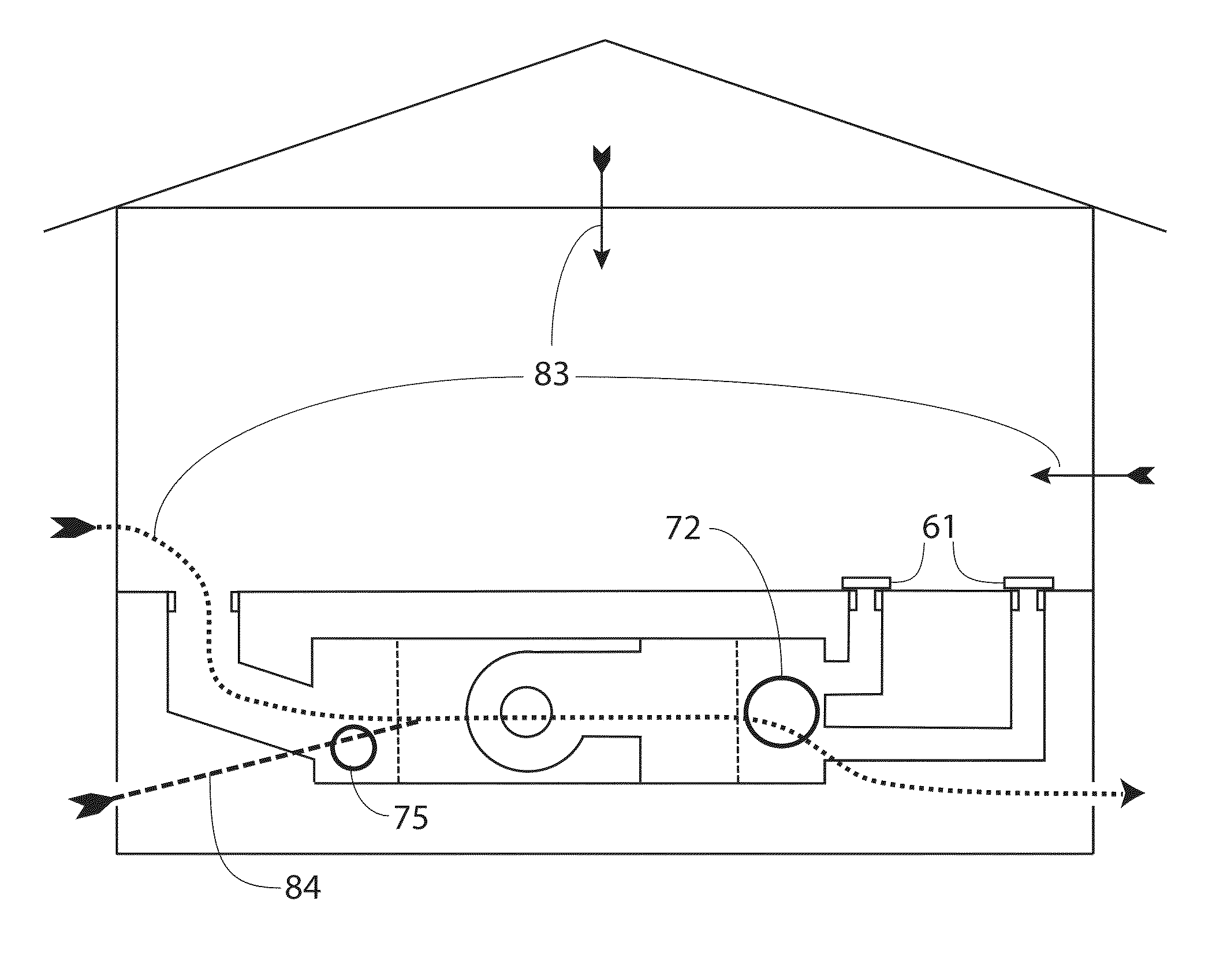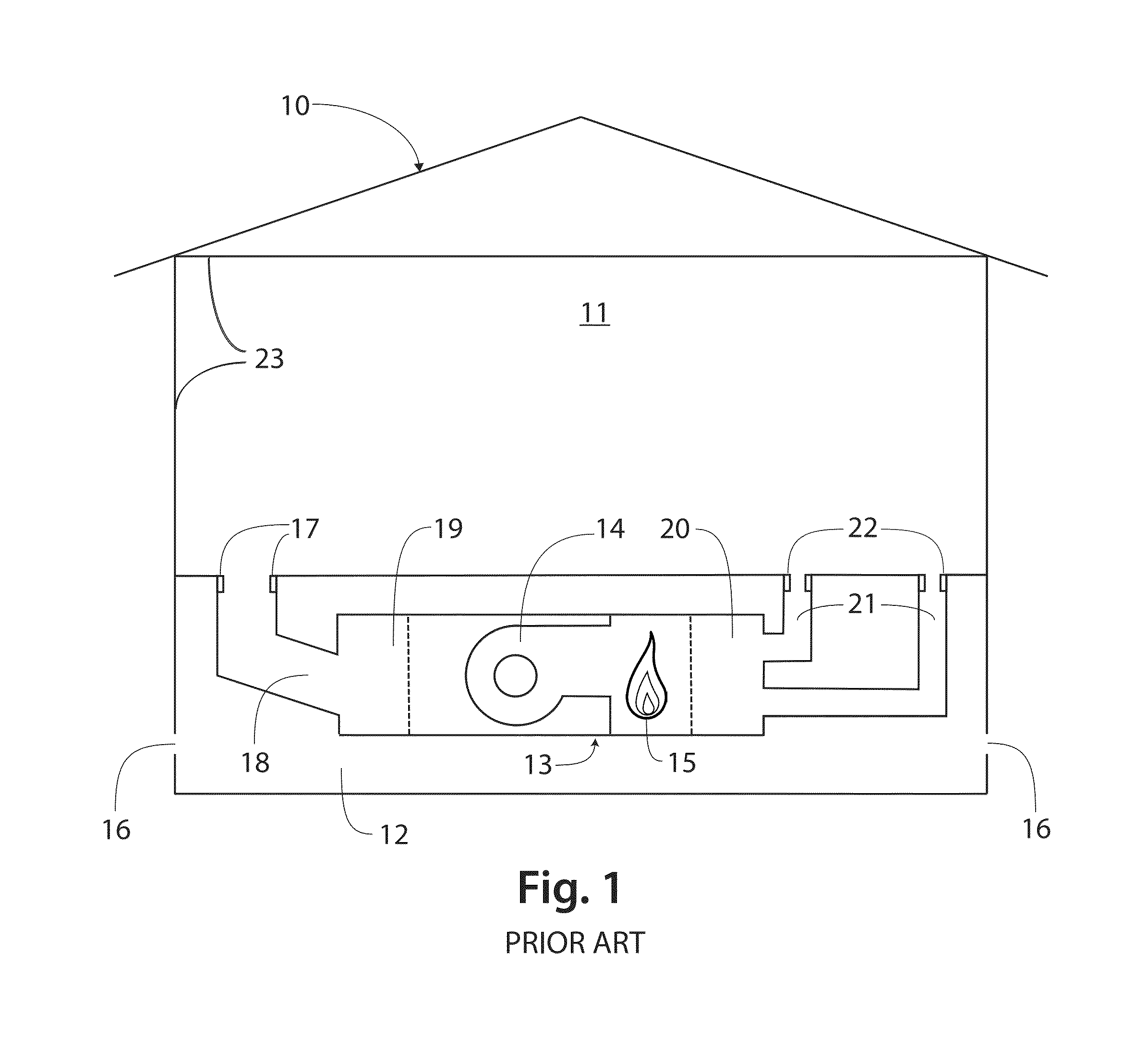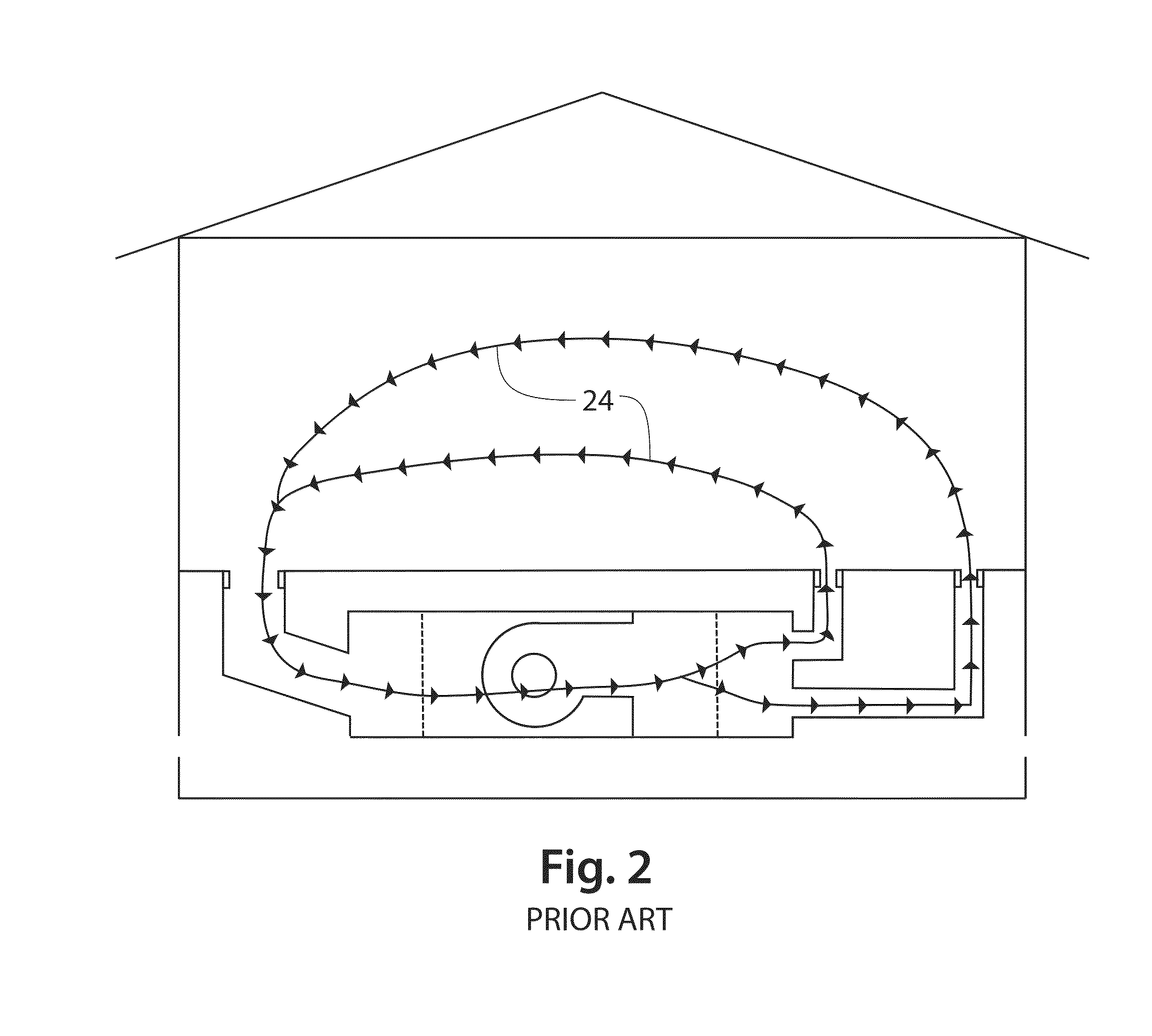Method and system using an HVAC air handler and thermostat for building energy loss testing, monitoring and cost control
a technology of hvac air handler and thermostat, which is applied in the direction of lighting and heating apparatus, heating types, instruments, etc., can solve the problems of no known good location to measure average pressure, no known good location for observing average pressure, and significant leakage caused by return path resistance, etc., to achieve easy visualization, increase the effect of airflow through the envelope and reduce the cost of leakag
- Summary
- Abstract
- Description
- Claims
- Application Information
AI Technical Summary
Benefits of technology
Problems solved by technology
Method used
Image
Examples
embodiment
Sophisticated Embodiment
[0163]In another class of embodiments, one of which is depicted in FIG. 14, configuration, test and monitoring functions are integrated into a programmable thermostat assembly 140, using the microcontroller 141, thermistor 160, display 142 and keypad 143 in the thermostat, and the air handler control electronics 144, located inside the air handler assembly 13. The air handler assembly 13 contains blower 14 driven by motor 148, and burn valve 153. Motor 148 or control logic 149 may include a circuit breaker to prevent excessive power consumption by motor 148. In prior art thermostats that are easier to use, the functions of keypad 143 are performed by a touchscreen integrated into display 142. Recent programmable thermostats using prior art may also include wireless communications module 158 that connects the thermostat to a network. In operation according to the prior art, the thermostat 140 controls the blower relay 152, burner relay 154 and air conditioner ...
PUM
 Login to View More
Login to View More Abstract
Description
Claims
Application Information
 Login to View More
Login to View More - R&D
- Intellectual Property
- Life Sciences
- Materials
- Tech Scout
- Unparalleled Data Quality
- Higher Quality Content
- 60% Fewer Hallucinations
Browse by: Latest US Patents, China's latest patents, Technical Efficacy Thesaurus, Application Domain, Technology Topic, Popular Technical Reports.
© 2025 PatSnap. All rights reserved.Legal|Privacy policy|Modern Slavery Act Transparency Statement|Sitemap|About US| Contact US: help@patsnap.com



